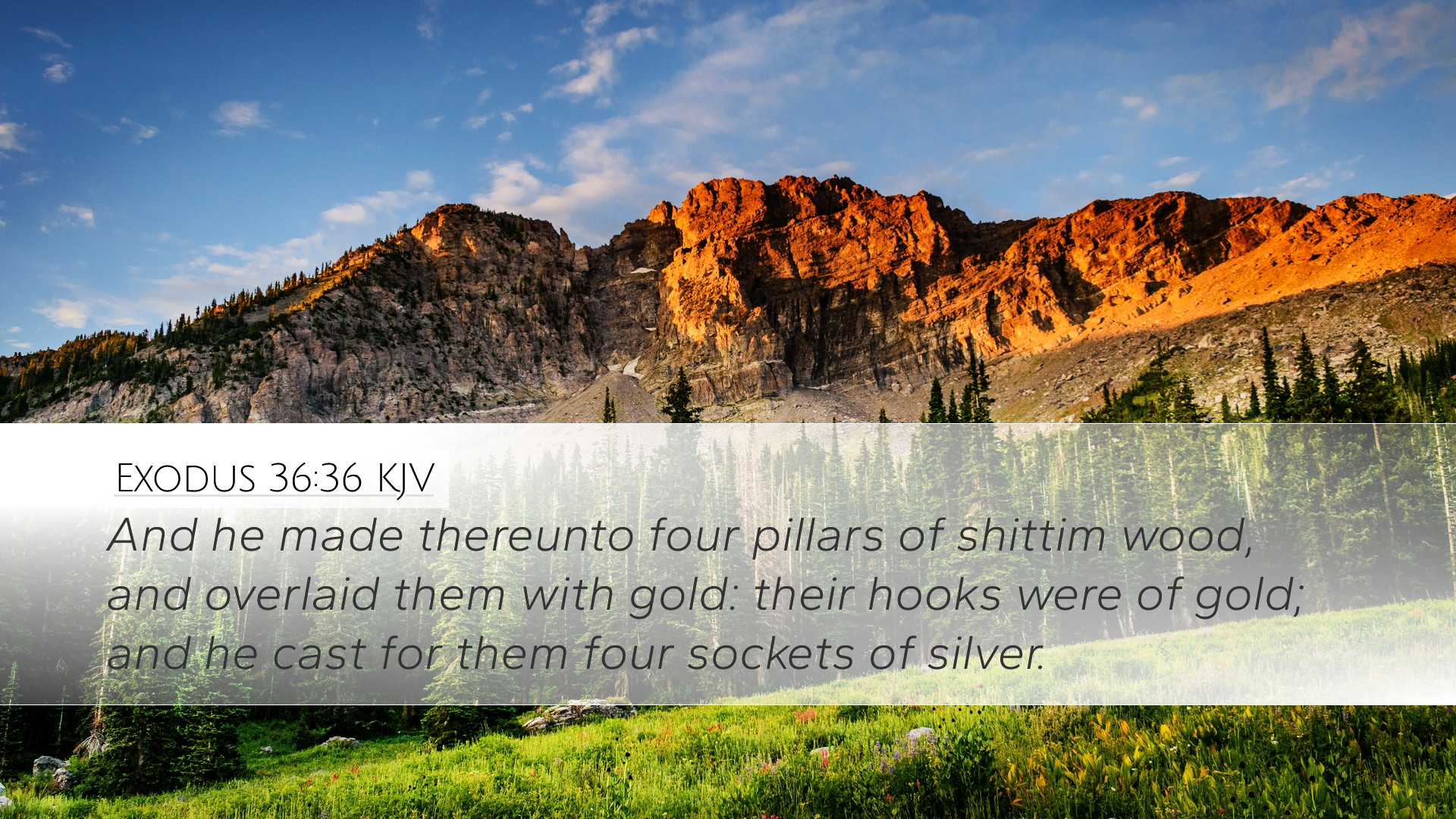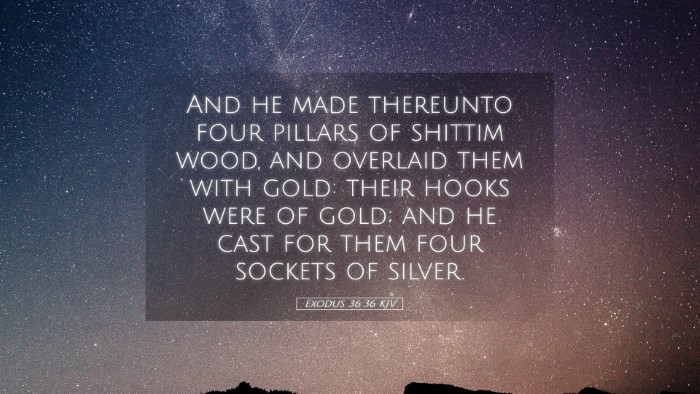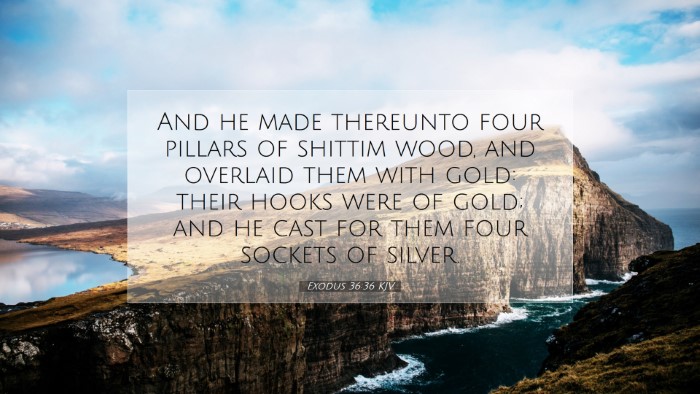Exodus 36:36 - Commentary and Insights
Verse Reference: Exodus 36:36 - "And he made a vail of blue, and purple, and scarlet, and fine twined linen: with cherubims made he it of cunning work."
Contextual Overview
In the Book of Exodus, the narrative culminates in the detailed instruction and execution of the construction of the Tabernacle, the dwelling place of God among His people. The verse in question refers specifically to the creation of the veil that separated the Holy Place from the Most Holy Place (Holy of Holies), indicating not just its material construction but also its profound significance in the worship of Yahweh.
Insights from Public Domain Commentaries
Matthew Henry's Commentary
Matthew Henry notes the meticulous nature of the work that went into the veil. He emphasizes that the veil was not merely a physical barrier but symbolic of the separation that sin created between God and humanity. The colors—blue, purple, and scarlet—can be interpreted as representing various aspects of Christ's redemptive work. The blue signifies His heavenly origin, the purple His royal dignity, and the scarlet indicates His sacrificial blood.
Henry further elaborates on the cherubim depicted on the veil. These heavenly beings remind the Israelites of God’s holiness and the divine presence that is both protective and authoritative. The artistry involved in the construction of the veil showcases not only human skill and craftsmanship but also reflects the glory and beauty of God’s plan for redemption through the symbolism inherent in its design.
Albert Barnes' Notes on the Bible
Albert Barnes highlights the technical details associated with the veil's creation. He points out that this veil was a significant element of the Tabernacle, acting as a barrier that suggests the ultimate need for mediation between God and man. Barnes notes that the intricate work displays the necessary reverence and care the Israelites were to have in their approach to God. The skilled craftsmanship indicates that God’s presence was not to be approached lightly; rather, it required a deep acknowledgment of holiness.
He also stresses that the veil can prefigure Christ Himself, who serves as the mediator between God and humanity. The tearing of the veil at Christ’s crucifixion (Matthew 27:51) symbolizes the access believers now have to God, highlighting the fulfillment of the sacrificial system portrayed in the Old Testament.
Adam Clarke's Commentary
Adam Clarke delves into the significance of the colors used in the veil’s design. He notes that these colors serve to embody various theological truths: blue represents heaven and divinity, purple signifies kingship and royalty, and scarlet is indicative of suffering and sacrifice. Clarke offers insights into how each color contributes to the understanding of God’s character and His plan of salvation, which is fully revealed in Jesus Christ.
Clarke further discusses the cherubim, noting that they serve as a reminder of God's presence and His majesty guarding the sacred space. He suggests that the veil's design, particularly the cherubim, also recalls the narrative of Adam and Eve being expelled from the Garden of Eden, underscoring the seriousness of sin and the pain of separation from God.
Theological Reflections
The veil illustrated the profound mystery of divine holiness and human sinfulness. Its existence articulated both a barrier and a means through which God could reveal Himself. In post-resurrection theology, the tearing of the veil speaks to the accessibility of God's presence through Christ, enabling a new covenant relationship with believers.
Practical Application
For pastors and theologians, Exodus 36:36 serves as an important reminder of the holiness of God and the grace extended through Jesus Christ. It highlights the need for reverence in worship and underscores the transformation of access to God through faith. Students and scholars can glean from this account a rich understanding of the interplay between Old Testament patterns and New Testament fulfillment.
Conclusion
Exodus 36:36 invites careful consideration of God’s intentionality in establishing a means for communion with His people. The veil, beautifully crafted and symbolically laden, points toward the greater revelation of God’s plan of redemption fulfilled in Christ. In studying this passage, readers are drawn into deeper appreciation of God’s holiness, the weight of sin, and ultimately, the incredible gift of grace.


